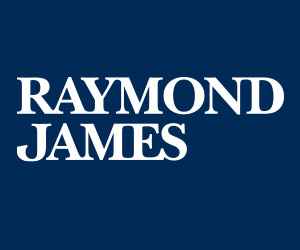On Leadership: Are you getting your point across? Advice from a communications expert

Suzanna de Baca Jun 23, 2023 | 6:00 am
<1 min read time
0 wordsAll Latest News, On Leadership, OpinionThis is part of a series on effective communication for leaders and organizations.
“If you want to be an effective leader, you need to excel in communication. In fact, the success of your business relies on it,” says a Harvard Business School online article. I did a double take when I read that passage, because when I was studying for my MBA, most of my classmates scoffed at any communications curriculum. But it turns out that in order to lead anything – or to be a good colleague – you have to get your point across. Effective communication is critical for leaders to gain trust, align efforts and inspire positive change, all which ultimately affect the bottom line.

“If you are awake, you are communicating. It is as simple as that,” says Maria Volante, CEO of Volante Consulting. Volante, a veteran communications consultant who was also an executive leader at Principal Financial Group and Wells Fargo, says that various studies show we spend over 70% of our waking hours communicating – and a lot of that time is at work. According to Volante, leaders need to consider the overall impact of communication: 55% is what the audience sees, 38% is what the audience hears and 7% is the actual message. You must certainly have a compelling message, but how you look and sound consistently are equally important.
I sat down with Volante to discuss how leaders can be most effective in getting their point across to multiple audiences in an environment with so many communications methods and platforms, including verbal, nonverbal, written, video, digital and more.
If you are awake, you are communicating. It is as simple as that.
Maria Volante, CEO, Volante Consulting
What are some of the ways leaders communicate these days?
There are the obvious areas of communication – in person, virtual, sending emails. There are also ways we communicate that we may not be as conscious of but should be. For example, when we are listening, our nonverbals can send a message. I am very comfortable crossing my arms. That said, I try hard to not do so because it communicates an unintended message that I am being defensive or standoffish.
Social media plays a huge part in this as well. I have worked with people who have a very formal and polished image at work, on LinkedIn, or with community work. But when you look at Facebook, Instagram or Twitter, they have a completely different persona. People will believe what seems most real, and when there is inconsistency the perception goes to what appears to be the “real you.” The way we talk, write and hold ourselves – even when listening – sends a message and is constantly being interpreted by others.
What are some areas leaders can focus on to be more effective communicators?
Listen. Leaders are trained, coached and rewarded for being good talkers. While the ability to communicate effectively is critical, the best leaders know to listen first, talk second. A person in one of my training classes once told me that his clue that he was being a good listener was his empty coffee cup. He shared that if he was listening, he had time to drink his coffee – thus the empty cup. The person who did all the talking had a full coffee cup. I’ve watched for that ever since!
Manage virtual presence. The pandemic threw us into the use of virtual technology, and it saved our sanity because it gave us the ability to connect when we couldn’t be in person. Even though it is several years later, leaders can still work on showing up as professionally on camera as they do in person. Manage your virtual presence with the same discipline that you would leverage during an in-person meeting.
Know you’re always selling. Remember ABC = Always Be Closing. Research shows that approximately 86% of communication is persuasive in nature. We want to move our audience to the desired action. As a result, our messages should be designed to “sell” the audience on the benefits to them of doing what we are requesting. We know what we want from our audience. To move the audience to that action requires that they hear what’s in it for them.
Be consistent. The way in which we communicate is the way we present our personal brand. Well-managed brands are consistent brands. Think of Starbucks – whether you prefer their coffee or not, you know what to expect when you step into the store. Leaders need to communicate consistently to avoid confusion and inauthenticity. What I coach against is “presentation voice.” It’s the voice that a person takes on in the front of the room that is markedly different from their communication style when just talking to you. Inconsistency breeds inauthenticity. Be you, be consistent.
Is it harder to communicate effectively now in today’s workplace with hybrid or remote workers or new priorities?
Yes and no. I love the fact that pretty much the world – even my 87-year-old mother – can use virtual technology, thanks to the pandemic. We are more effective when our audience can see us, even if that is on camera. Forbes reported that perception of trust went up 72% when the camera is on, as opposed to audio only, and perception of a positive customer service experience went up 73%. As a result, I share with all my clients: Turn the camera on. Even if you’re working from home from your bedroom, make the bed and turn the camera on – it’s worth it.
The challenge lies in that we are still trying to manage the environment when part of the audience is virtual and part of the audience is in person. We need to continue to be very purposeful in managing all locations for the audience. It’s more work but effort well spent.
Why is listening so important in effective communications?
When we talk before listening, we are making our job harder because we are having to guess. We must guess what is important to the audience. Why guess? That just makes our job harder. When we listen to our audience, we put ourselves in a position to align our message to what the other person told us first. Instead of “I suggest this because,” it may be more effective to say, “Based on what you shared, I would suggest.” Make it about your audience, not you.

Suzanna de Baca
Suzanna de Baca is a columnist for Business Record, CEO of Story Board Advisors and former CEO of BPC. Story Board Advisors provides strategic guidance and coaching for CEOs, boards of directors and family businesses. You can reach Suzanna at sdebaca@storyboardadvisors.com.









